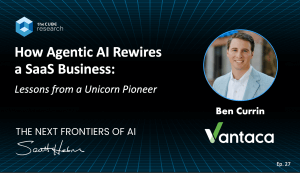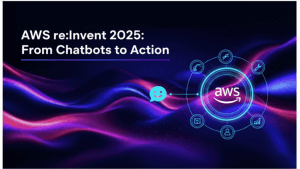I spent a couple of sun-filled days in San Diego attending Cisco’s WebexOne 2025, where the company unveiled a significant number of innovations that position Webex as a connected-intelligence platform. A platform that unifies devices, applications, data, humans, and AI agents across edge, cloud, and control planes. With 23,000 virtual and in-person attendees at the keynotes, Webex highlighted the need to remove friction from hybrid work, operationalize AI responsibly, and maintain an open platform so customers can deploy on-premises, in the cloud, or both. Cisco continued to drive its “loosely coupled, tightly integrated” story by extending AI Canvas to Webex as well (Thousand Eyes is already connected). Partner sessions deepened that story, showing how Nvidia, Microsoft, and Salesforce extend Webex capabilities to provide digital twins, endpoint/security integration, and a native CCaaS-CRM experience. On day two, Webex dove deeper into the new innovations with a series of demos (such as creating digital twins to optimize AI workspaces, orchestrating multiple agents and human and AI agent interactions, and ensuring AI Quality Management, to name a few) and customer outcome stories from Verizon, ADP, HD Supply, TD Bank, and others. Ultimately, Webex is positioning itself as the place where humans and AI agents collaborate securely, at scale, and with measurable business impact.
Day One Keynotes: Connected intelligence across edge, cloud, and control.
The WebexOne25 messaging centered on “connected intelligence”, the idea that great experiences emerge when AI and data are consistently available from the device and room (edge), through cloud services, and into the control plane that governs policy, observability, and automation. The target state is “one-click to distance zero”: minimize the effort and latency between intent and outcome, whether that’s joining a meeting, standing up a workspace, or resolving a customer issue.
Cisco underscored that openness isn’t a talking point but a product principle. Customers should be able to use third-party applications, run them wherever necessary (cloud, on-premises, or sovereign), and still access new AI features. This stance acknowledges regulatory realities (data residency, sovereignty, and security) and multi-vendor estates. Practically, that means offering innovation via Webex regardless of whether workloads reside in public cloud or enterprise data centers.
Day One emphasized moving beyond point features (e.g., summaries) to operational AI. This requires policy-aware, observable agents and assistants that are instrumented for performance and outcomes. AI Canvas will now be part of Webex, enabling operators to leverage a multiplayer AgenticOps solution to accelerate problem resolution. Cisco also cited that governance, data protection, model/tool allow lists, and auditability are prerequisites for trust. The platform’s direction is to embed AI where it reduces user workload (setup, join, follow-ups) and where it augments operators (insight, root cause, recommended actions), always with a measurable impact.
Partner Discussions: The Ecosystem as a Force Multiplier
Cisco and Nvidia showcased how AI on devices, combined with cloud services, can produce room-level digital twins. Using imagery from a Cisco room system, Webex’s Control Hub can simulate acoustics, identify seating/meeting zones, and propose layouts, all without the need for tape measures or site visits. The value: faster deployments, consistent experiences across rooms, and fewer misconfigurations. Nvidia’s role is to provide AI acceleration for the perception and simulation layers; Cisco brings device telemetry, the management plane, and a collaboration UX.
With Microsoft on stage, the two companies positioned their collaboration as complementary strengths: Cisco’s world-class devices, networking, security, and collaboration services, coupled with Microsoft’s productivity stack and identity/security controls. The joint aim is to provide customers with choice while enhancing endpoint management, data protection, and AI at the edge, ensuring that hybrid work investments are secure, governed, and performant.
Cisco announced Webex Contact Center for Salesforce, a “better together” approach that brings omnichannel routing, a unified agent workspace, and shared data insights inside Salesforce. The goal is to eliminate swivel-chair workflows: agents work in a CRM context with contact center capabilities embedded, and AI can operate across both data planes for proactive service, next-best actions, and post-interaction analytics. The broader message is that customers shouldn’t have to choose between a CCaaS-first or CRM-first stack; the integration aims to deliver both.
Day Two: Demos, Customer Proof, and the AI Contact Center
A live demo showed Workspace Advisor creating a digital twin of an expo room, then using AI to recommend and apply meeting zones (mic placement, acoustic guidance) directly from Control Hub. This is all about eliminating friction; admins can validate setups remotely, standardize experiences, and reduce the need for truck rolls. It also foreshadowed how device AI, cloud AI, and control compress time-to-value.
Cisco introduced a multi-agent orchestration model within a redesigned AI Studio. Rather than a single conversational bot, a “master” agent coordinates specialized sub-agents (e.g., image analysis, scheduling, CRM retrieval) via modular Actions. A retail “bike shop” scenario illustrated proactive outreach, identity verification, image-based recommendations, automated scheduling, and payment, then escalation to a human with full context. Two design choices stood out:
- Human-like voice interactions to build user trust and expand the range of tasks customers will attempt with AI.
- Composable actions that let enterprises integrate agents into existing systems without bespoke coding every time.
AI Quality Management (AIQM) for humans and agents was also discussed. Supervisors typically see fragmented views across channels and tools. AIQM aggregates every interaction, human or AI, and surfaces performance trends (CSAT proxies, sentiment, policy adherence). Precision tips tie coaching to exact moments (e.g., missed survey invitations), closing the loop on behavior change. Importantly, AIQM monitors AI agents as first-class “team members,” enabling governance, tuning, and accountability across the blended workforce.
Customer outcomes at scale.
As mentioned above, Cisco invited several customers to share their insights with the audience, highlighting how they are working with Webex to deliver value to their environments. Examples include:
- Verizon migrated 120,000 employees to Webex in six weeks, citing strong adoption of AI features like transcription and summaries, and exploring agent-triggered real-time automations.
- TD Bank shifted 4,500 agents to Webex Contact Center in a single weekend (following a pilot), highlighting integration depth and disciplined change management.
- ADP stressed that measurement, stakeholder alignment, and governance must accompany AI rollout; the focus is on productivity with safeguards.
- HD Supply emphasized “invisible tech”, tools should adapt to associates, not the other way around. Early AI use is driving demand for more embedded assistance.
Cisco reiterated that innovation and infrastructure choice are not mutually exclusive. Enterprises can run Webex workloads in the cloud or on-prem (and in certain regions, sovereign deployments), yet still access the AI roadmap. In an era of sovereignty and sector regulation, this is a pragmatic differentiator.
What Changes for Enterprises
The direction is clear for enterprises: AI isn’t a sidebar feature; it’s the fabric of user and operator workflows. Digital twins reduce deployment delays; agentic orchestration turns “assistants” into doers; and AIQM instruments both humans and agents for continuous improvement. This elevates collaboration and CX from cost centers to operational leverage points.
- Open ecosystems reduce lock-in risk: By deepening ties with Nvidia, Microsoft, and Salesforce (and supporting third-party stacks generally), Cisco is making a case that best-of-suite can coexist with best-of-breed. The practical benefit is fewer forced trade-offs; customers can keep familiar tools while modernizing with Webex’s AI layer.
- Governance is a first-class feature: Repeatedly, speakers tied AI progress to governance: model/tool allow-lists, policy controls, data protection, audit trails, and explainability. That posture aligns with regulated industries (finance, healthcare) and global organizations that need proof, not promises, that AI is safe and compliant.
- Measurable outcomes over hype. The customer stories prioritized speed of migration, reduction of low-value work, and better experience metrics over abstract AI enthusiasm. Some KPIs will increase (e.g., handle time for complex cases), which can be a positive signal if AI is deflecting simple interactions and routing true complexity to skilled agents with better tools.
OurANGLE
WebexOne 2025 presented a consistent strategy: make AI tangible, governable, and open, then prove it with real deployments. The conference defined the north star (connected intelligence, one-click to distance zero, open platform). Partner sessions showed how Nvidia, Microsoft, and Salesforce extend that value in physical spaces, security/endpoint manageability, and CRM-native service. Hands-on demonstrations and customer proof points highlighted that AI agents and quality management can scale responsibly today.
For organizations, the big takeaway from WebexOne 25 is: if you need AI that spans rooms and devices, collaboration apps, and the contact center, without locking you into a single infrastructure or SaaS monoculture, Cisco is positioning Webex as the platform where humans and AI work side by side with security, scale, and choice. I thought Vinod Muthukrishnan summarized the Webex value prop nicely by focusing on the power of one. One consistent experience, regardless of the channel. One platform for UC and CC, and most importantly, One Cisco, with the ability to leverage the networking, security, and observability solutions from Cisco, which, as Jeetu Patel likes to say, are “loosely coupled but tightly integrated.” I expect that we will continue to see more Cisco innovations being integrated into Webex over the next year, and certainly for WebexOne 26!
For additional information on the conference, please visit the WebexOne website



